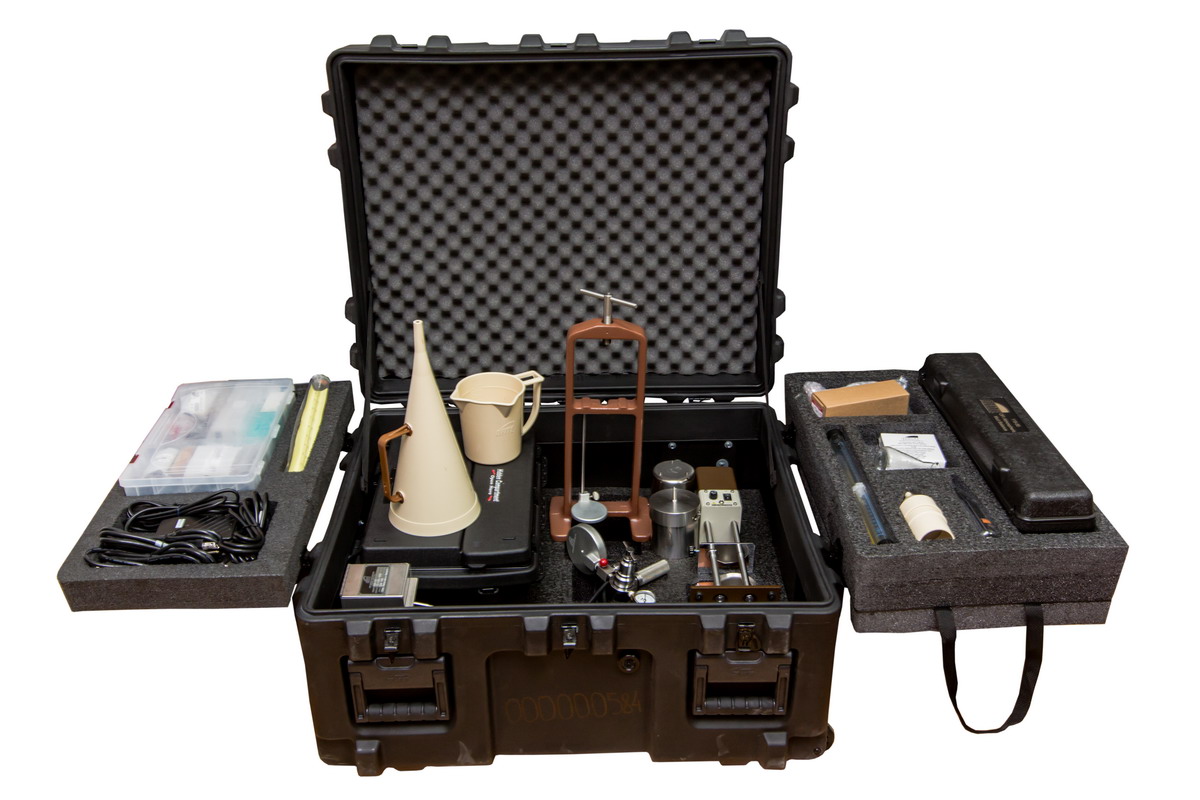With the beginning of increasing drilling intensity in Kazakhstan and abroad, there was a need to regulate the field laboratories in the fields, to coordinate them and to monitor the quality of chemical reagents. For this purpose, in 2010 a central laboratory was set up in Aktobe in the building of AktobeNIGRI and provides additional support for core and drilling mud research.
The laboratory of Omac provides technical support for field laboratories and their control, carries out the necessary analysis of drilling fluids in accordance with API standards, as well as the development of new drilling mud systems. Any necessary equipment can be delivered for special tests. This laboratory is able to provide technical support to our customers at any time and help with the occurrence of various problems with the solution in the field.
All equipment meets international standards and is produced by companies such as FANN or OFITE (USA), and complies with API standards.
At the end of the research, the laboratory gives a full analysis and recommendations for more effective solution of the problems that have arisen at the drilling site. Each field laboratory conducts daily contact to transmit timely information.

| LIST OF INSTRUMENTS USED BY THE CENTRAL LABORATORY: | ||
|---|---|---|
| Scales lever | Density of the drilling fluid is the most important parameter that is necessary for well control. | |
| Viscometer | From rheology depends cleaning of the well from drilled rock and keeping it suspended. | |
| Filter Press | Low fluid loss slows the hydration of clays and contributes to the formation of a thin crust, which prevents the emergence of differential stuck. | |
| High pressure filter press (500 PSI) and high temperature 150°C | When drilling deep wells with a high bottomhole temperature, it is necessary to know what kind of water yield under the given conditions. | |
| Retort | The measurement of the solids content is necessary to control the content of cuttings in the drilling mud. A high content leads to an increase in density and viscosity, as well as other parameters. | |
| Complete chemical analysis of the filtrate and formation water | For the stable operation of polymers, it is necessary that the ion concentration be within the appropriate range. Their content is determined by special reagents. | |
| Device for measuring friction between crust and metal | It is necessary to investigate the lubricity properties of drilling fluids. | |
| 5-Roller furnace | To simulate the impact of downhole conditions on drilling mud for a day or more, there is the possibility of testing in a roller furnace. | |
| Mixer | To mix drilling fluids and chemical reagents. | |
| Analytical scales | Required for weighing laboratory samples for the analysis of chemical reagents. | |
| Tester for the determination of differential tack | It is necessary to determine the probability of sticking of a standard-sized drilling tool. | |
| Permeation Clogging Tester (PPA) | It is necessary to determine the static filtration in the well. The method of selecting a ceramic disc, pressure and temperature can completely simulate bottomhole conditions. | |
| Tester for determining the lubricity properties of drilling mud | It simulates friction of the tool in the normal mode and in the high pressure mode. | |
| Tester of linear swelling of clays | It is necessary to determine the hydration and swelling of shales over time with continuous fixation on the computer. Special tablets from the tested rock are stamped in a special compactor under pressure. | |
| Calcimeter | Required to determine the amount of calcium carbonate in a drilling fluid sample or cuttings. | |
| Pressurezied mud balance | Required to determine the density of aerated (aerated) drilling mud. | |
| Corrosion cell | The cell measures the corrosion rate of steel in the drilling fluid. | |
This list is incomplete and is provided for review